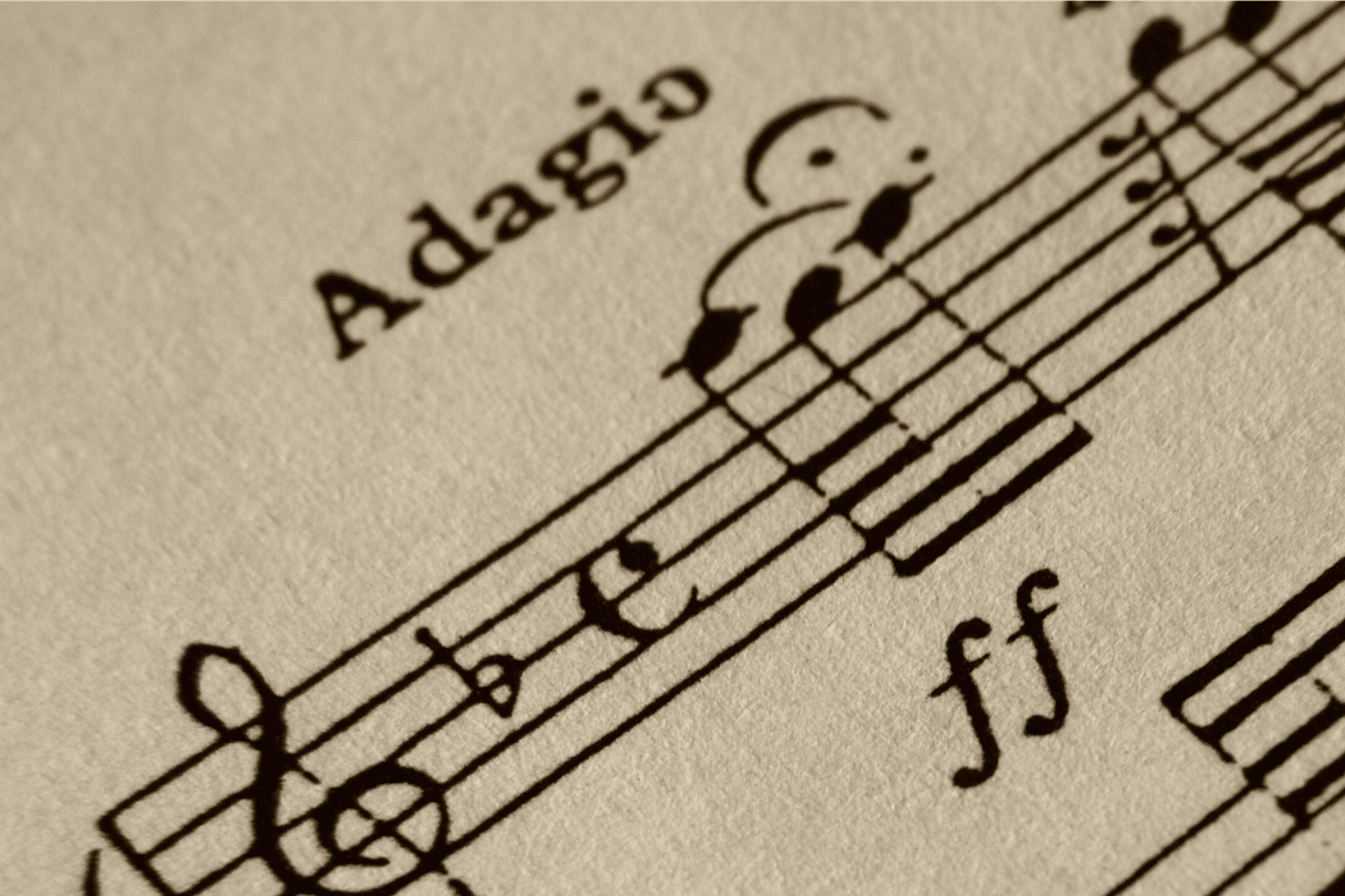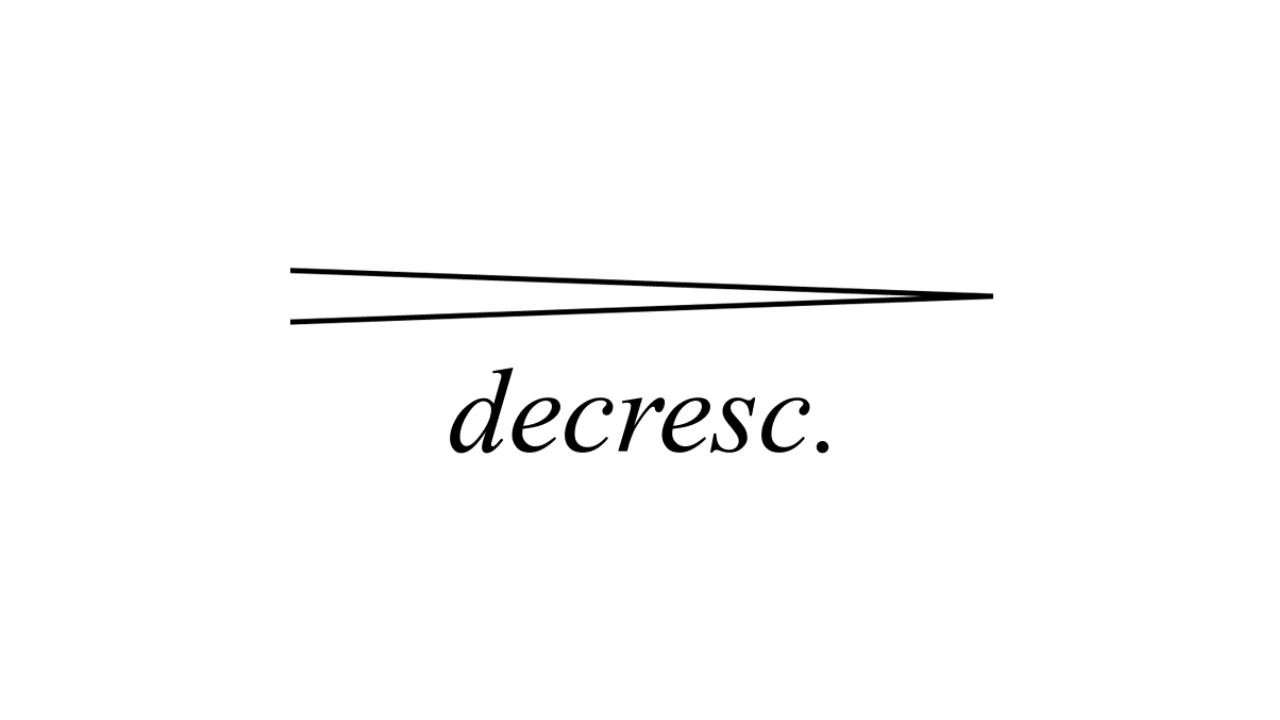Strophic form is a very simple form of music in which the basic melody-harmony unit or “strophe” is repeated throughout. The structure of a song in strophic form is A A A.
You can think of a strophe as being the musical equivalent of a verse in poetry. What is important in strophic form is that, strictly speaking, the underlying harmony and melody of each strophe or musical block remain the same.
The lyrics can change and most often do. Composers may sometimes tweak the melody or key of the song, and this leads to what we can call a modified strophic form (A A’ A’’).
In this post, we’re going to look at 12 examples of songs in strophic form to help you better understand it. Let’s get started.
Related: For more information check out our guide to strophic form here.
1. Itsy Bitsy Spider – Nursery Rhyme
Because a strophe is analogous to a verse in a poem, a good place to find songs in strophic form is a book containing children’s nursery rhymes. ‘Itsy bitsy spider‘ is a good example.
The text of the poem remains the same throughout, and so do the melody and accompanying chords.
Another example of a rhyme that repeats the same text is ‘Row, row, row your boat’.
In nursery rhymes like ‘The wheels of the bus,’ the text of strophe changes.
The music in the video above, by Twinkle Little Songs, features a very brief introduction and interlude, which are auxiliary sections.
2. Michael Row the Boat Ashore – Peter, Paul, and Mary
Traditional folk music, sung by the educated and unlettered alike, ought to be simple in its structure, and that’s why you’ll often find folk songs cast in strophic form.
One that dates back to at least the mid-19th century is ‘Michael row the boat ashore’.
The Afro-American spiritual can be traced back to an island off South Carolina and has a catchy, memorable melody to which various versions of lyrics have been sung.
3. Salve Mundi Domina – Brebeuf Hymnal
Hymns that do not have a “chorus” or “refrain” are generally strophic in form.
Since the melody of each strophe is the same, you can simply add the verses one below each other.
If you ever encounter sheet music formatted this way, you know the piece is in strophic form.
Take a look at the video to see a hymn with the text of each verse written below a common melody.
Popular hymns in strophic form include ‘Amazing grace’ and ‘Be Thou my vision’.
4. Adoro Te Devote – Saint Thomas Aquinas
Chants, too, can be in strophic form.
‘Adoro te devote’ dates back to the 13th century and is actually a hymn in chant form.
This piece provides a chance to explore how strophes are constructed: The melodic contours of the lines accompanying the 4-line verses reveal 4 phrases.
Each group of four phrases comprises a strophe.
It’s important to remember that each strophe must be a complete multi-phrase segment, which is then repeated to build the piece.
5. Worried Man Blues – Midnight Run
Songs that have a “refrain” or “chorus” often are structured as ABABAB.
However, it is also possible for songs with refrains to be in strophic form, so long as B is a variation of A or uses the exact melody of A.
Worried man blues, played by Midnight Run, features a modified strophic form.
The chorus is built on the same musical material used for the verse.
The verses and choruses are A, whereas the instrumental sections, which use the same harmonic vocabulary as the verses, can be looked on as A’.
6. Blowin’ in the Wind – Bob Dylan
The great songwriter Bob Dylan used the simplicity of the strophic form as a vehicle, leaving his listeners with memorable tunes laced with powerful messages.
In some of his songs, you can see the refrain sewn to the end of each block of text.
Here, the entire verse-refrain block forms a strophe.
In ‘Blowin’ in the wind’ by Bob Dylan, you can hear the AAA structure clearly, with brief mouth organ interludes interspersing each block.
Another Bob Dylan song that accommodates a refrain at the end of each verse is ‘Times are a-changin’.
7. 12 Variations on Ah vous dirai-je, Maman – W. A. Mozart
In this piece, Mozart displays a range of variation techniques, applying them to the popular melody of ‘Twinkle twinkle little star’.
For instance, you have melodic variation in the first variation, rhythmic in the fifth, and harmonic in the seventh.
All but the last variation are 24 bars in length.
A modified strophic template of A A’ A’’… seems to be apt for this “theme and variations”.
However, it can be argued that some variations, for instance, the one in the minor mode, alter the music too much to be still considered a close relative of the strophe.
8. Qu’on me parle plus – Pierre Guédron
The “air de cour” or “court air” is a genre of vocal music that dates back to the royal courts of 16th and 17th century France.
It features elements of Baroque and Renaissance music, and in many of these secular songs, you have one or two voices accompanied by a harpsichord or lute.
In ‘Qu’on me parle plus’ by Pierre Guédron (c. 1565 – 1620), you can hear successive verses of the text sung to the same melody.
The instrumental intro and outro can be looked at as auxiliary sections.
9. Heidenröslein – Franz Schubert
The German “lied”, which in the time of Franz Schubert (c. 1797 – 1828) referred to the musical setting of Romantic poetry, often finds itself in strophic form.
“Heidenröslein” or “rose on the heath” talks about love rejected and was penned by Johann Wolfgang von Goethe in 1789.
Schubert sets it in duple time for voice and piano in 1815.
Though the music is essentially the same for all three verses, the third is treated differently in terms of the dynamics, with the soprano singing with increased intensity.
10. String Quartet in B-flat Major, Op.50, No.1 – Joseph Haydn
Joseph Haydn, the “father of the string quartet” and a contemporary of Mozart, was known to use the strophic variation form in his quartets.
Here, it appears in the slow, second movement “adagio non lento”.
The framework of the strophic form demarcates the playing ground within which Haydn masterfully crafts variations that successively showcase the skill of the individual performers.
The movement ends with a coda.
11. Blue Suede Shoes – Carl Perkins
A rock and roll classic, and a hit in the 1950s, ‘Blue suede shoes’ is in strophic form, or modified strophic form one may say.
The entire song can be divided into sung and instrumental strophes, with the same harmony structure undergirding each basic unit.
While the guitar solos provide melodic variety, the chord progression is still intact, and so the sung sections can be termed A and the instrumental ones A’.
Blue suede shoes is an example of how the 12-bar blues is extremely compatible with the strophic form.
12. Take Me Back to Jamaica – The Jolly Boys
Like American folk, you can find the strophic form used in other cultures, such as Jamaican folk.
Reggae music has roots in the “mento” music of Jamaica, and this form of music features guitars, banjos, light percussion, and the strophic form.
‘Take me back to Jamaica’ offers a taste of mento music, and the simple tonic-dominant-subdominant harmonies provide a foundation for instrumental and vocal parts.
Even when the solo instrument deviates from the vocal melody line, the strophe is clear as the harmony is as simple as it is apparent.
Wrapping Things Up
Now that you have a better grasp of what music in strophic form sounds (and looks) like, you’re likely to bump into it as you listen to your favorite songs.
If you are a composer, explore the potential that the simplicity of the strophic form offers – it helps draw attention to the lyrics and offers fertile ground for subtle melodic variations!



